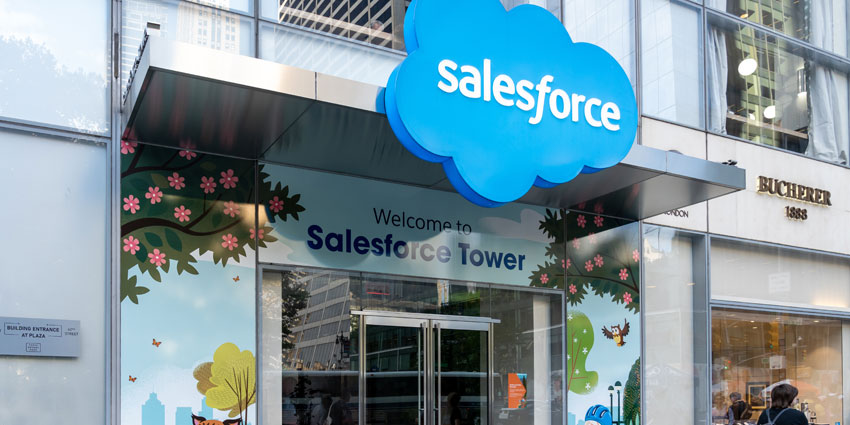Salesforce raced out of the gates when launching Agentforce 2.0 in October 2024.
In doing so, it beat out the likes of Microsoft, SAP, and ServiceNow, hoping businesses would establish its platform as a foundation for developing AI agents.
The initial $2 per conversation pricing model was simple to digest, and it delivered value across several use cases, like AI agents that handle frontline customer conversations.
Yet, as brands have started to experiment more with Agentforce, they’ve developed numerous AI agent prototypes that deliver differing levels of value. Some offered strong ROI, others didn’t.
Moreover, as the use cases expanded, the previous model caused confusion. After all, if an AI agent is running tasks like building a quote, for example, a conversation-based approach just doesn’t fit.
As such, Salesforce needed a more flexible, tangible Agentforce pricing model.
Bill Patterson, EVP of Corporate Strategy at Salesforce, believes the business has delivered this with its new and improved pricing strategy.
“We’ve been listening to our customers and developing a new framework called action-oriented pricing,” he told CX Today.
This model doesn’t charge for small talk or general fluff like: “How was your day?” It charges based on the actual work performed by the agent, what we call “taking action”.
Indeed, with the action-based model, businesses pay for the tasks agents complete, not for abstract technical metrics like compute, storage, or large language model (LLM) calls.
Each Agentforce action costs 20 credits (or $0.10), with Flex Credits sold in packs of 100,000 for $500.
Unlike traditional cloud-specific credits – like for Sales Cloud, Service Cloud, etc. – businesses can use a Flex Credit to power AI agents that work across all Salesforce clouds.
That extra flexibility allows customers to scale up or down as needed, regardless of whether their agent is used for sales, service, or marketing.
“Many customers want agents that can do all those things, and the Flex Credit supports that by being a universal currency across our platform,” summarized Patterson.
Yet, perhaps most crucially, a Flex Credit scales from the simplest to the most complex use cases.
Think of it like powering a home with electricity. Businesses don’t pay differently to fuel their stove versus their refrigerator; they all draw from the same grid.
Similarly, Salesforce provides an AI agent capacity to enterprises without forcing them to navigate complex pricing tiers.
Yet, Salesforce isn’t giving up on its conversation-based model. Instead, customers can opt for the pricing model that delivers a better ROI for their specific use cases.
Key Additions to the Pricing Model: Flex Agreement & a Digital Wallet
As companies deploy AI agents, they reimagine how their teams work and roles change. In these cases, they could end up with unused Salesforce licenses.
Via its Flex Agreement, Salesforce allows customers to convert those excess license costs into Flex Credits, which they can spend on AI agents. That gives customers more flexibility to reallocate budgets between human and digital labor.
“Many companies go through cycles of surge hiring and firing to meet market demand,” said Patterson. “Instead, companies can use digital labor to handle peak demands. This balances their workforce more efficiently.
Previously, they might have purchased software licenses to handle those peaks. Now, they can convert unused licenses into digital labor capacity.
The feature is a positive addition to the pricing model, as it gives customers the confidence to invest in Salesforce with fewer concerns about overbuying.
Additionally, Salesforce can encourage more brands to try Agentforce, as they can do so for “free” if they haven’t scaled as quickly on the vendor’s CRM apps as anticipated and have unused capacity. That’s a common occurrence.
Lastly, there’s also a Digital Wallet that gives companies visibility and control over how many actions their agents perform each month.
Moreover, the Wallet allows organizations to measure AI agent effectiveness, monitor usage, and even set limits if needed.
For example, if one agent becomes popular but also expensive, the business can cap its usage.
In this sense, the Digital Wallet becomes the command center for understanding how digital agents drive results.
How Does Salesforce’s Pricing Model Compare to Market Rivals?
Typically, hyperscalers aim to drive compute usage with their AI agent pricing models and offer extremely granular metering.
As a result, they typically charge separately for things like inflammatory language detection or document processing.
While that approach can be relatively cost-efficient, it can get complex quickly.
At the other end of the spectrum, startups are offering labor-replacement models. These models price agents as if they were full-time employees.
Such a model may suit companies trying to replace human labor directly, but that’s not Salesforce’s bag, according to Patterson.
“We’re not trying to replace labor or nickel-and-dime customers with microservices,” he said. “We’re positioned right in the middle.”
That said, Patterson added that Salesforce will continue evolving its pricing model based on user feedback, which will prove key as AI usage costs normalize.
Will the New Pricing Model Increase Agentforce Adoption?
8,000 companies already use Agentforce. That makes it the fastest-growing solution in Salesforce history. That’s the positive take.
The negative take is that 8,000 is a small percentage of Salesforce’s 150,000-strong install base.
Either way, the new pricing model will lower the barrier of entry, while the Flex Agreement capability may tempt customers that previously overlooked the offering.
Yet, the pricing model is just as much about expanding Agentforce implementations as it is about landing them.
Indeed, the $2 per conversation model may work well for external-facing support agents. However, that’s just one type of agent.
The new model enables an infinite variety of agent types. After all, it’s not just about simplifying access for one agent; it’s about unleashing many agents across a company. That’s how Agentforce and similar technologies are evolving.
Salesforce to Rebrand Einstein One as “Agentforce One”
Lastly, Patterson revealed that Salesforce will introduce another edition of Agentforce in July.
The “Agentforce One” solution is a rebrand and expansion of Einstein One, which bundles tools for sales and service teams into a single package.
From July, Sales and Service Cloud customers will get unlimited access to Agentforce One for a single per-user, per-month price, as per Patterson.
With this release, Salesforce will likely hope to serve up starter Agentforce use cases that inspire adoption and build confidence in the platform for more advanced, custom experimentation.
Want similar expert CX interviews delivered to your inbox? Subscribe to the CX Today Newsletter.







